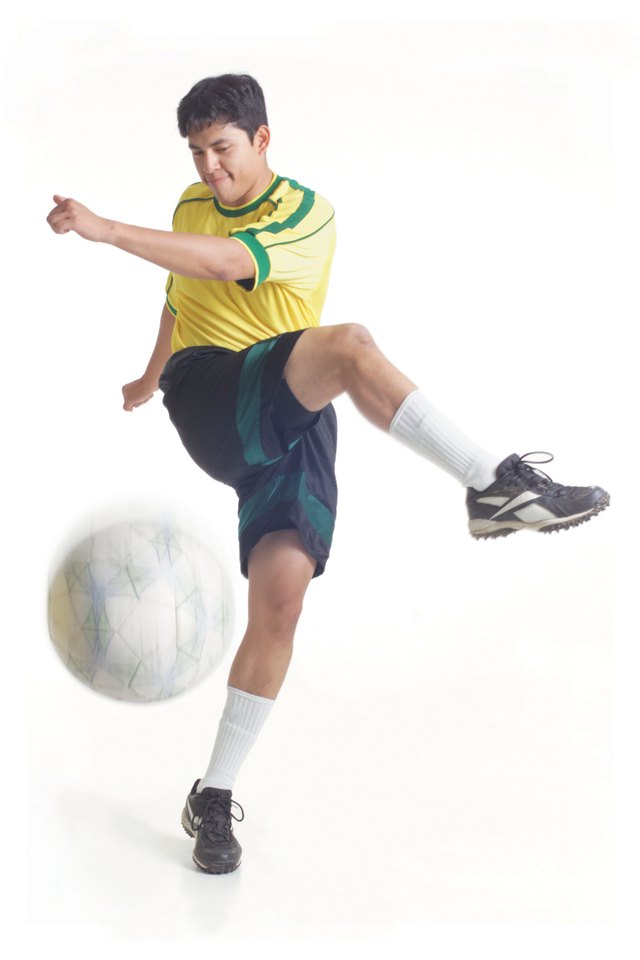The Muscles Used in Hip Adduction

Hip adduction involves moving your leg toward -- and sometimes across -- the center of your body. This movement pattern is common in many activities, such as ballet, soccer, karate and sometimes even running if you need to cut to the side to avoid something in the road. Although the adductors, which are the muscles of your inner thighs, are the obvious contributors to hip adduction, many other muscles orchestrate the movement together.
Adductors
Several muscles make up the adductors of your inner thighs, including adductor brevis, adductor longus, adductor magnus, pectineus and gracilis. No single muscle works alone. Not only do they assist hip adduction together, they also assist internal and external hip rotation, hip flexion and extension and hip abduction.
Hip Muscles
There are two types of muscle contractions: concentric and eccentric. Concentric contraction is the shortening of muscle fibers against a resistance, while eccentric contraction is the lengthening of muscle fibers against a resistance. For example, when you kick a soccer ball across your body, your adductors concentrically adduct while your hip muscles -- including the gluteus maximus -- eccentrically adduct to counter the force of the kick. Without the function of the hip muscles, which also include the gluteus medius, gluteus minimus and tensor fascia latae, you cannot perform hip adduction.
Obturator Externus
The obturator externus muscles deep in your lower pelvis and near your hip joints assist in hip adduction and stabilize your hip with other hip rotators, such as the piriformis, obturator internus and quadratus femoris.
Core Muscles
It is nearly impossible to adduct your hips without your core. The core muscles, which include your pelvic floor muscles, transversus abdominis and the multifidi along your spine, stabilize your body and keep it in balance when you move. For example, when you run and cross your leg and foot in front of your body to change direction, your core prevents you from losing your balance and falling.
References
- Bossier Parish Community College: Hip Abduction/Adduction
- Trail Guide to the Body, 3rd edition: Andrew Biel
- Anatomy Trains; Thomas Myers
- University of California San Diego: Types of Contractions
Writer Bio
Nick Ng has been writing fitness articles since 2003, focusing on injury prevention and exercise strategies. He has covered health for "MiaBella" magazine. Ng received his Bachelor of Arts in communications from San Diego State University in 2001 and has been a certified fitness coach with the National Academy of Sports Medicine since 2002.
